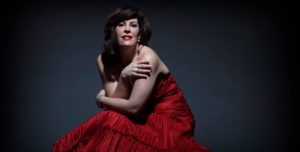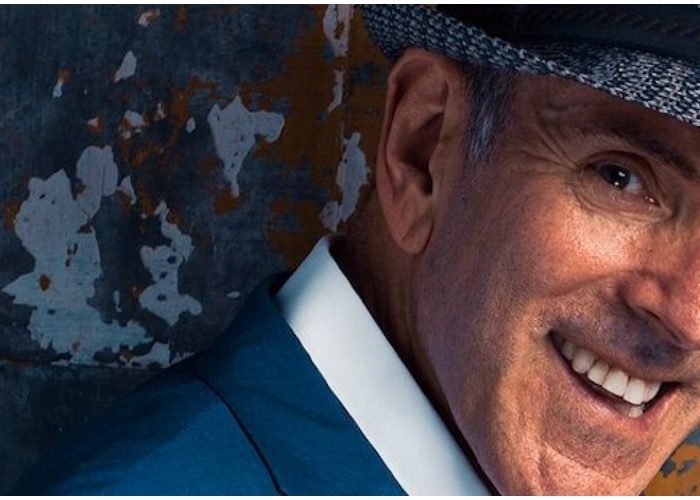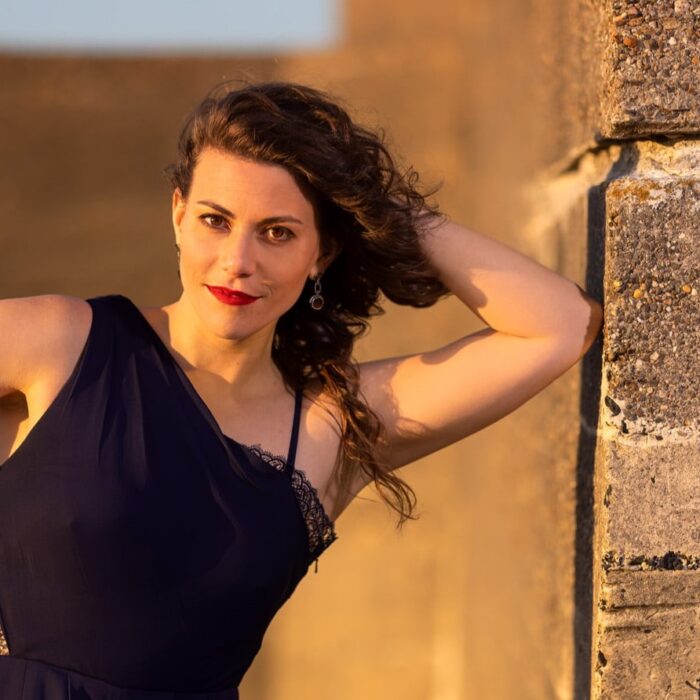
Climbing Mount Everest – Sondra Radvanovsky On Her Evolution in Bellini’s ‘Norma’ [Exclusive]
By Francisco SalazarEvery major discipline has its proverbial “Mount Everest,” the pinnacle achievement. The moment of “arrival” in which the person can feel a sense of accomplishment that few others, or only the true greats, have accomplished.
In the soprano operatic repertoire, Bellini’s “Norma” is often viewed as that proverbial peak due to its taxing and wide-ranging nature. Lili Lehmann, one of the most important Wagnerian sopranos of her time, once noted that the role was harder than all three Brünnhilde’s in Wagner’s “Der Ring Des Nibelungen.”
But that has not stopped some of the greatest sopranos from taking on the role. As a matter of fact it is one of the most popular in the repertoire and is currently making the rounds all over the globe thanks in part to Sondra Radvanovsky.
“It’s so special because of the history of it and all the great sopranos whose footsteps I am following. It’s really an honor to be included in that group of sopranos that have sung the opera at some of the great opera houses in the world. In my opinion it’s the pinnacle of all the soprano roles,” Radvanovsky enthused in an exclusive interview with OperaWire.
Training for the Climb
Anyone looking at Radvanovsky’s repertoire throughout the past decade, which is dominated by dramatic roles in Puccini’s “Tosca” and Verdi’s “Aida” and “Il Trovatore,” would not necessarily take her for a major candidate to tackle “Norma.” The opera’s greatest challenge lies in that its dramatic intensity is often held in check by its Bel Canto qualities. As history has shown, it is the rare singer that possesses both the heavier qualities necessary for the dramatic moments as well as the more flexible nature required for the nimble writing.
But sure enough, Radvanovsky felt that she could rise to the challenges inherent in the opera and set about making it her own.
When she first began to study the role the American-Canadian soprano listened to as many recordings as she could. One interpreter had a major impact on her view of the work.
“Callas. I am one of those groupies. She was the very first one that I heard sing this. Something happens to me when I hear the orchestra play and then I hear Maria Callas,” she explained. “It’s the one I relate to and what she does with the role is not just vocally but with the text. You could really tell that she inhabited this role.”
Callas actually took on the role well into her career after starting it off with Wagner operas and heavier Verdi repertoire. Radvanovsky is following somewhat of a similar trend, though this has been due to a rather unexpected development in her voice.
“My voice has moved higher and I think that has a lot to do from singing this Bel Canto,” she noted. “So I really feel like my technique is more solid because of this repertoire. It forces to you to be a better singer. ”
That solid technique and alteration to her voice has allowed her to do something completely unimaginable before – pull off an E Flat at the end of “In mia man’ alfin tu sei,” the tenor/soprano duet.
This has also amplified the inherent gifts of Radvanovsky’s voice – a dark lush timbre to go along with a voluminous sound that conductor Riccardo Frizza has compared to a “canon.” Her voice is so big that an audience member might wonder whether her stage partners might be completely washed away by the titanic sound.
This issue is particularly prominent in “Norma,” which requires the soprano to sing adjacent to a mezzo or a soprano. The role has two very tricky duets that are written in similar vocal lines and it requires the two performers to blend their voices. This is something that Radvanovsky has really enjoyed.
“You have to really learn how to balance your voice with the other singer. It’s not two solo singers. It’s two singers singing a duet. You want the lines to be interwoven and the vocal lines to blend and to not know who is singing if you closed your eyes.
Radvanovsky notes that every performance is always different depending on how each performer is feeling and for her the best colleagues are those that can listen and adjust. “It’s like having a conversation. You have to listen and it’s a give and take and that’s so important when one sings these duets. And you have to adjust and react to the way [your partner] singing.”
The First Climbs
Radvanovsky started scaling the “Norma” mountain in Oviedo, Spain in 2011 in a semi-staged production. As with most mountain climbers doing their first climb, there were a lot of jitters and mixed emotions.
“I was scared to death,” she revealed about the experience. “I didn’t have much experience singing Bel Canto when I first sang ‘Norma.’ In fact the first Bel Canto Opera I sung was ‘Lucrezia Borgia.’ So going from that right into Norma was quite daunting.”
But it proved a great test on many fronts as the scaled-back format of the opera enabled her to really get accommodated to the opera’s many challenges.
“It’s a very long opera and getting all those words into your head without a problem is really tricky. So I was constantly thinking technique and how was I going to sing this phrase and that one. I was really glad that it wasn’t a fully staged because I had more energy to think about the singing and didn’t have to think as much about the staging.”
It also helped immensely to have colleagues experienced in the opera that should could lean on.
“I did my first one with Dolora Zajick of of all people who had sung Adalgisa with the greats in all the great opera houses,” she added.
From there she took it to New York for her first stage performance before performing it in San Francisco, Barcelona and Toronto, receiving massive acclaim for her portrayal.
Looking back at her first staged Norma, Radvanovsky conceded that the emotions always come flooding back.
“It is such an honor to share that stage with all the sopranos before me. I remember walking on stage to sing ‘Casta Diva’ on opening night and, literally, my knee was shaking and I prayed to God that I wasn’t going to fall into the pit,” she related. “I was standing there and thinking ‘Maria Callas sang here.’ And I was thinking ‘I’ve made it. ‘I’ve arrived.’ That was a big moment.”
A Familiar Challenge
After that New York run, Radvanovsky went about singing the opera in San Francisco, Barcelona and Toronto in Kevin Newbury’s ever-evolving production. Now she will perform that very staging at the Lyric Opera of Chicago starting on Jan. 28, 2017. The production, which has been described infusing “fantastical” elements, is one that Radvanovsky has enjoyed working on due to its universal qualities.
“This production is very flexible in that it’s quite open and the time frame is very ambitious. It’s not really set in a specific period. So it can be more modern if you want it to be more modern or it can be very traditional if you want it more traditional depending on our movements,” she explained. “It also been really great to see how it has changed. It really has morphed over the years and that’s what’s beautiful about a production like this.”
She has also been able to find new facets to the character through her collaboration with Newbury and his directing style which allows performers to explore their characters and bring their own interpretations to the roles.
“He’s really great. He tells each one of us to bring a personal story to the production. So for instance Elizabeth DeShong, who is singing Adalgisa, now has different thoughts than Jamie Barton who did it in San Francisco. Everyone has a different perspective on it. That is the beauty of Bel Canto. You sing it with your own voice and your own personality,” Radvanovsky added.
A New Challenge On Conquered Ground
Since life tends to be somewhat circular, it is no surprise that Radvanovsky will return to the site of her first staged “Norma” to kick off the 2017-18 season.
Radvanovsky was not originally set to open the Metropolitan Opera’s 2017-18 season, but a cancellation propelled her into the spotlight of the company’s new production, which will be directed by her long-time collaborator David McVicar. The two have joined forces numerous times at the Met as they did the new production of Verdi’s “Il trovatore” and Donizetti’s “Anna Bolena,” “Maria Stuarda” and “Roberto Devereux.”
“David and I have a very special relationship after having done the three [Donizetti] queens. We definitely have a dialogue and in many ways its just unspoken and he could just look at me or I could just look at him and I know exactly what he’s thinking and what he wants me to do. I don’t have to say anything. He’ll move his body one way or he’ll just plant a little seed. He challenges me and I think the great directors are the ones that really challenge us as not just as singers but as actors.”
What Radvanovsky admires most about McVicar is his life-long dedication to opera, something that sets him apart from many directors working in opera today.
“David really understands the music of opera. He’s not a theater director directing opera. He’s a theater director that understands opera and he learns the whole vocal score,” she stated. “And that dedication to the art is so rare these days. I admire him for that and I am really looking forward to what we are going to create with this ‘Norma.’ It’s going to be above and beyond anything we’ve done before. I just can’t wait.”
Lessons Learned From the Climb
Despite only singing the role for four years and in two productions, Radvanovsky is now a veteran of the role. And as is the case with vets, experience with the role has allowed her to not only grasp the particular challenges for her personally and how to conquer them, but has also confirmed many of the myths surrounding the opera.
“It’s emotionally exhausting,” she explained before she elaborated on the physical exhaustion that can set in. “I know Birgit Nilsson said that the only thing you need is a good pair of shoes. And I agree. You’re always on stage.”
With so many performances under her belt Radvanovsky feels it has helped her understand how to balance the acting with the singing so that she does not get to the end of the opera without a voice.
“I have really learned how to pace myself vocally as well as physically because Norma is really a woman that changes her emotions really quickly. She’ll go, one bar to the next, from screaming at Pollione to no ‘I’m sorry I love you’ to ‘No, I’m going to kill my kids.’ That aspect is very intense,” she noted.
“It’s very easy as a singer and actress to get caught up in that intensity which can tire one out quickly. Yes you have to convey that intensity in that anger, sadness, longing love and happiness and all the emotions because Norma feels every emotion possible. You can feel all that but vocally you have to make sure those emotions don’t get caught in your body and in your throat. And that is always a game that one has to play with oneself. That’s really for me been the journey I’ve taken with this role. Finding how to convey that while keeping the body and voice free.”
Radvanovsky has also learned that getting into the complex character doesn’t have to be a massive ritual.
“The process always starts when I put the wig and the makeup and the costume. It’s really like putting on a different personality. Once I have the costume on, I feel like I have physically transformed into Norma and that allows me to mentally transform into her as well,” she said. “What’s in this character’s pocket? What are they feeling today? To have these physical trigger points makes you switch gears in the brain and you go ‘I’m thinking not of Sondra singing Norma but I’m thinking as Norma.’ Then I can react on stage as Norma. Like Tosca, I’ve never killed anyone and unlike Norma I’ don’t have children, let alone have I ever thought of killing them. But we have to find something as an actor. Something inside of us that can relate to them. That is the journey we have to take as actors. All of that has to happen on stage.”
And while it is easy to get into the character rather quickly, getting out of if is as hard as climbing down the mountain.
“It’s exhausting. That’s why I get home and sit on the sofa and you need then another hour or two to decompress from taking that whole character out of you.”
But Radvanovsky’s greatest takeaway from conquering this Everest? Loving her craft and artistry more and more everyday.
“I was singing ‘Tosca’ when I first looked at ‘Norma.’ One doesn’t make the progression from ‘Tosca’ and ‘Aida’ and ‘Ballo in Maschera’ to ‘Let’s sing Norma,'” she joked. “It’s not normal for a singer as they get older for their voice to get higher. Sopranos normally drop. Singing this role has taught me that I could do this. It’s given me confidence. It’s changed my life.”


